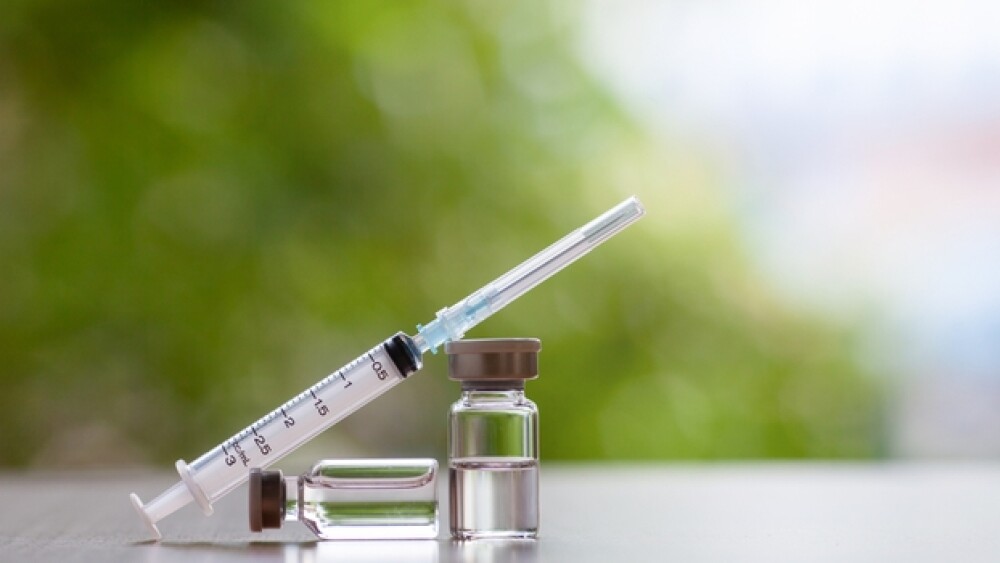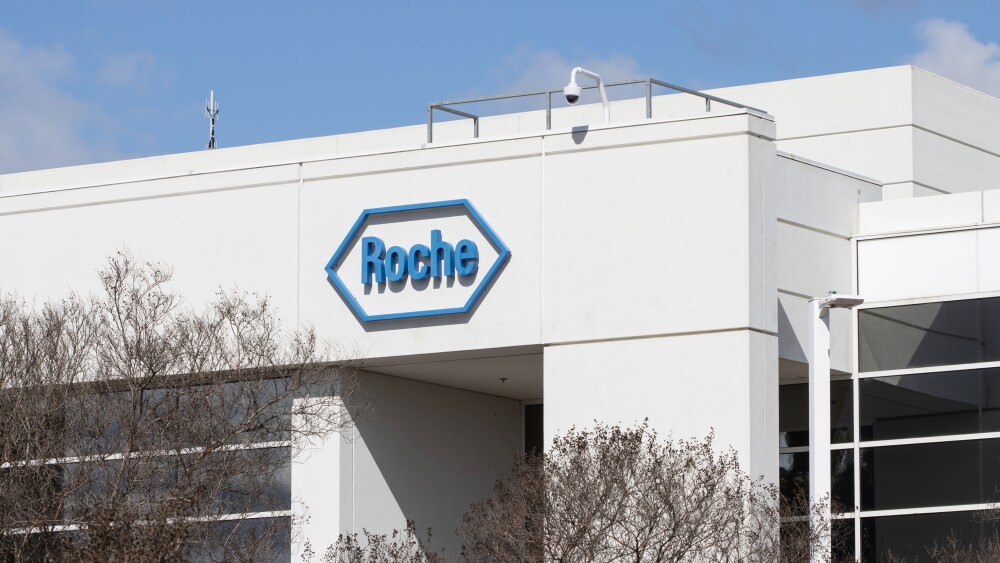According to PhRMA, there are 264 vaccines in development to prevent and treat diseases. These include infectious diseases (137), cancer (101), allergies (10), autoimmune disease (8) and Alzheimer’s disease (4).
Historically, the first disease to be totally eradicated by vaccines was smallpox. This vaccine was first introduced in 1796 by Edward Jenner. He had noted that milkmaids who had caught cowpox did not catch smallpox. He lanced a cowpox lesions from Sarah Nelms, a young dairymaid and inoculated an eight-year-old boy, James Phipps, with it. The boy developed a mild fever discomfort but recovered. Two months later Jenner inoculated Phipps with a fresh smallpox lesion. The boy did not come down with smallpox.
Before 1980, the disease killed three out of every 10 people infected. It killed hundreds of millions of people worldwide before it was eradicated.
From 1966 to 1977, the World Health Organization undertook a global campaign to eliminate the disease via a worldwide vaccination program. The last known naturally occurring smallpox case was seen in October 26, 1977, in Merka, Somalia. By 1980, WHO declared smallpox eradicated.
There are two known stockpiles of variola, the virus that causes smallpox—in Atlanta, Georgia, at the U.S. Centers for Disease Control and Prevention (CDC) and the Russian State Center for Research on Virology and Biotechnology in Koltsovo, Russia.
Another human disease that has been eradicated, is rinderpest, or “cattle plague,” which was eradicated in 2011.
Modern vaccines have been used, and are being developed, to control, prevent or, hopefully, eradicate some diseases. They often use a weakened or dead virus or bacteria, or antigens found on their surface, to trigger a protective immune response. However, increasingly, vaccine technology utilizes other approaches to vaccinate against not only infectious diseases, but also diseases like cancer.
14 Diseases that Vaccines Control or Have Eliminated
The CDC prepared a list of 14 diseases that people have almost forgotten about, because of vaccines. They include:
- Polio. The disease has been eliminated in the U.S., although it still pops up in other countries. Children typically receive four doses of the polio vaccine (IPV) at 2 months of age, 4 months, 6 through 18 months, and 4 through 6 years.
- Tetanus. Tetanus, sometimes called lockjaw, can be fatal. Doctors typically recommend children receive five doses of the DTaP vaccine. Adults often get a tetanus booster about every 10 years.
- Influenza. Every year, a new flu virus based on the most likely strains to spread, is introduced in the late-summer and early fall.
- Hepatitis B. Spread through the blood or other bodily fluids, Hepatitis B killed more than 780,000 people each year. Physicians recommend children receive three doses of the Hepatitis B vaccine between birth and six months of age.
- Hepatitis A. Hepatitis A is a contagious liver disease transmitted via person-to-person contact or by contaminated food or water. The Hepatitis A vaccine was developed in 1995.
- Rubella. Rubella, also called German measles, is particularly dangerous for pregnant women and their developing child. It is recommended that children receive two shots of the MMR vaccine at the ages of 12 to 15 months and the second at 4 to 6 years.
- Hib. The Haemophilus influenzae type b can damage a childre’s immune system and result in brain damage, hearing loss, and death. It affects children under five years of age. Doctors recommend four doses of the Hib vaccine to children from 2 months to 12 through 15 months.
- Measles. Highly contagious, measles causes a blotchy red rash, fever, cough, pink eye, and can lead to serious complications, such as pneumonia and seizures. The measles-mumps-rubella (MMR) vaccine can prevent it.
- Whooping Cough (Pertussis). This disease can be deadly to infants. Physicians recommend five doses of the DTaP vaccine between the ages of 2 months and 4 to 6 years.
- Pneumococcal Disease. Caused by Streptococcus pneumoniae, this causes ear and sinus infections, pneumonia, and meningitis. The pneumococcal vaccine is called PCV13.
- Rotavirus. This virus causes severe diarrhea, often accompanied by vomiting, fever and abdominal pain. It occurs mostly in infants and young children. Doctors recommend two or three doses of the vaccine from the age of 2 months to 6 months, depending on the specific vaccine.
- Mumps. This disease is the results of swelling of the salivary glands, but other symptoms include fever, head and muscle aches, and tiredness. The MMR vaccine can prevent mumps, measles, and rubella.
- Chickenpox. Chickenpox causes an itchy rash, blisters and a fever—as many as 500 blisters all over the body. It can be serious and life-threatening. Doctors recommend two chickenpox shots, one at 12 through 15 months and one at 4 to 6 years.
- Diphtheria. Very rare now, the DTaP vaccine protects against diphtheria, tetanus, and whooping cough. Diphtheria results in a thick coating in the back of the nose or throat making it difficult to breathe or swallow, and can lead to heart failure, paralysis and death.
Vaccine Pipeline
According to the Pharmaceutical Research and Manufacturers of America (PhRMA), there are 264 vaccines in development to prevent and treat diseases. These include infectious diseases (137), cancer (101), allergies (10), autoimmune disease (8) and Alzheimer’s disease (4).
Here are some recent stories about vaccines:
• In May, the U.S. Food and Drug Administration (FDA) approved Sanofi’s Dengvaxia, a vaccine for all four serotypes of dengue. The disease, a hemorrhagic fever, is endemic in the U.S. territories of Puerto Rico and the U.S. Virgin Islands. The vaccine has a controversial history. It was pulled from the Philippine market in 2017 over safety concerns. However, it has been approved in 10 countries in Latin America and Asia where the disease is endemic. It was approved in Europe in December 2018.
• On November 7, Takeda Pharmaceutical announced that its dengue fever vaccine hit its primary efficacy endpoint in its Phase III clinical trial. The trial evaluated the vaccine in 20,000 patients in Latin America and Asia.
• In October 2019, 4D Pharma, based in Leeds, UK, partnered with U.S.-based Merck to develop Live Biotherapeutics vaccines. Outside the U.S., Merck & Co. is known as MSD. 4D Pharma focuses on the microbiome, the trillions of microorganisms that live in the human body. Live Biotherapeutics are a new class of medicines made up of strains of gut long-term bacteria originally isolated from healthy human donors. They are then encapsulated and administered orally, where they are selectively delivered to the gut where they can interact with the patient to exert therapeutic effects.
Under the terms of the deal, 4D will use its proprietary MicroRx platform with Merck’s expertise in novel vaccine development and commercialization to discover and develop Live Biotherapeutics (LBPs) as vaccines in up to three currently undisclosed indications.
• Also in October, researchers with the Washington University School of Medicine developed a technique to improve on cancer immunotherapy and vaccines. Currently, cancer vaccines and immune checkpoint therapies rely on a knowledge of MHC class I genes that activate killer T-cells. The new research looks at another group of genes, MHC class II, that activate the helper T-cells. One of Schreiber’s co-authors, Maxim N. Aryomov, an associate professor of pathology & immunology, developed a computer program that predicts which mutant proteins (antigens) on a tumor will specifically activate helper T-cells.
“The idea of giving checkpoint inhibitors along with a tumor-specific vaccine—especially a vaccine that activates both killer and helper T-cells—is just beginning,” said Robert D. Schreiber, the Andrew M. and Jane M. Bursky Distinguished Professor, and senior author of the study. “But based on our study, the combination is likely to be more effective than any of the components alone. Today, when we treat a particular tumor type with checkpoint inhibitors, maybe 20% of the patients respond well. We’re hoping that with a vaccine plus checkpoint inhibitors, the number of patients who respond well will go up to 60 to 70%. We haven’t tried that yet in patients, but that’s the hope.”
• In July 2019, Cambridge, Massachusetts-based Neon Therapeutics announced top-line results in its Phase Ib clinical trial of NEO-PV-01, its personal neoantigen vaccine candidate. NEO-PV-01 was being evaluated in combination with Bristol-Myers Squibb’s Opdivo (nivolumab) in advanced or metastatic melanoma, smoking-associated non-small cell lung cancer (NSCLC) and bladder cancer.
In all three cancer types, data showed prolonged and consistent improvements in progression-free survival (PFS) that is similar to that seen with checkpoint inhibitor monotherapy. In 27 patients with metastatic NSCLC, median PFS was 5.6 months. In 21 patients with metastatic bladder cancer, median PFS was 5.6 months. At 13.4-month median follow-up in 34 patients with metastatic melanoma, median PFS hadn’t been reached yet.
The War on Antibiotic-Resistant Infections
A recent CDC report, “Antibiotic Resistance Threats in the United States, 2019,” found that more than 2.8 million antibiotic-resistant infections occurred in the U.S. each year, killing more than 35,000 people. In 2017, the agency found that there were 223,900 cases of Clostridioides difficile (C. diff) infections, resulting in at least 12,800 deaths.
The report underlines the importance of funding the development of new antibiotics and the effectiveness of vaccines. The U.S. government does fund quite a bit of research into anti-infectives, largely through the Department of Defense and Health and Human Services’ Biomedical Advanced Research and Development Authority (BARDA). Moderna, for examples, receives quite a bit of funding for its mRNA vaccines and anti-infectives programs, as well as the Bill & Melinda Gates Foundation, which invests heavily in companies working on vaccine and antibiotics research.
CARB-X is a program led by Boston University and funded by BARDA, the Wellcome Trust, the Gates Foundation and U.S. and European government agencies. Between 2016 and 2021, CARB-X plans to invest more than $500 million into vaccine and antibiotic research and has already made 44 awards totaling $126.1 million.
Vaccines provide an unusual return on investment. Not only have vaccines eliminated or minimized some of the most serious infectious diseases the world has ever known, a 2016 Johns Hopkins University study found that for every dollar invested in vaccination in the 94 lowest-income countries in the world, $16 were expected to be saved in healthcare costs, lost wages and lost productivity. Taking into consideration healthier and longer lives and the long-term burden of disability, the net return increases to $44 per $1 invested.





